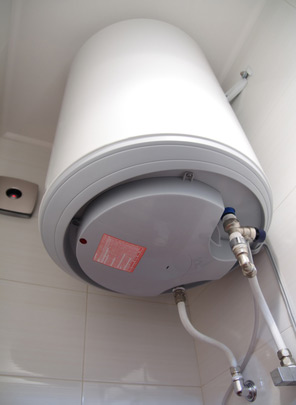The writer is making a number of great annotation on How to Maintain Your Water Heater & Prolong its Life in general in this content directly below.

Warm water is important for daily comfort, whether it's for a revitalizing shower or washing meals. To ensure your warm water system runs effectively and lasts longer, routine maintenance is vital. This short article supplies sensible ideas and insights on just how to keep your home's warm water system to avoid disruptions and expensive repair work.
Introduction
Maintaining your home's warm water system might appear difficult, but with a couple of easy actions, you can ensure it runs smoothly for years ahead. This guide covers everything from recognizing your hot water system to DIY upkeep ideas and knowing when to employ specialist assistance.
Importance of Preserving Your Warm Water System
Routine upkeep not only prolongs the lifespan of your warm water system but likewise ensures it operates effectively. Neglecting upkeep can lead to reduced efficiency, greater energy expenses, and even early failure of the system.
Signs Your Warm Water System Needs Upkeep
Knowing when your hot water system requires focus can protect against major concerns. Look out for indications such as inconsistent water temperature level, odd sounds from the heating unit, or corroded water.
Recognizing Your Hot Water System
Before diving right into maintenance jobs, it's useful to understand the basic elements of your warm water system. Commonly, this consists of the water heater itself, pipes, anode poles, and temperature controls.
Month-to-month Upkeep Tasks
Routine regular monthly checks can aid capture minor problems before they escalate.
Flushing the Water Heater
Flushing your hot water heater removes debris buildup, boosting efficiency and lengthening its life.
Checking and Replacing Anode Rods
Anode poles avoid rust inside the container. Examining and changing them when worn out is critical.
Inspecting and Adjusting Temperature Settings
Readjusting the temperature settings guarantees ideal efficiency and security.
Do It Yourself Tips for Maintenance
You can perform a number of maintenance jobs yourself to maintain your hot water system in leading condition.
Looking for Leakages
Routinely check pipelines and connections for leakages, as these can lead to water damages and higher expenses.
Testing Pressure Alleviation Valves
Evaluating the pressure safety valve ensures it functions properly and protects against excessive pressure accumulation.
Shielding Pipelines
Insulating warm water pipelines reduces heat loss and can save power.
When to Call a Specialist
While DIY maintenance is useful, some concerns call for specialist experience.
Complex Issues Calling For Expert Assistance
Examples include significant leaks, electrical problems, or if your water heater is consistently underperforming.
Regular Specialist Upkeep Perks
Expert upkeep can include comprehensive inspections, tune-ups, and making sure conformity with safety standards.
Verdict
Normal maintenance of your home's hot water system is essential for performance, long life, and expense savings. By complying with these ideas and understanding when to seek specialist assistance, you can guarantee a reliable supply of hot water without unexpected disruptions.
How to Maintain an Instant Hot Water Heater
Before tinkering with your hot water heater, make sure that it’s not powered on. You also have to turn off the main circuit breaker and shut off the main gas line to prevent accidents. Also turn off the water valves connected to your unit to prevent water from flowing into and out of the appliance. 2. When you’re done, you have to detach the purge valves’ caps. These look like the letter “T” and are situated on either side of the water valves. Doing so will release any pressure that has accumulated inside the valves while at the same time avoid hot water from shooting out and burning your skin. 3. When the purge valves’ caps are removed, you have to connect your hosing lines to the valves. Your unit should have come with three hoses but if it didn’t, you can purchase these things from any hardware or home repair shops. You can also get them from retail stores that sell water heating systems. Read the user’s manual and follow it to complete this task properly. When the hosing lines are connected, open the purge port’s valves. 4. You should never use harsh chemical cleaners or solutions when cleaning your unit. Make use of white vinegar instead. It should be undiluted and you’ll probably use about 2 gallons. 5. Now flush your water heater. This task should probably take about 40 minutes. We can’t give you specific directions for this because the procedure is carried out depending on the type, model and brand of your heater. With that being said, refer to the user’s manual. 6. When you’re done draining the unit, you have to turn off the purge port valves again. Remove the hosing lines that you earlier installed on each of the water valves. Put the valve caps (purge port) back in their respective places and be very careful so as not to damage the rubber discs that are found inside these caps. 7. Now that everything’s back in place, check your user’s manual again to find out how to reactivate your water heating system. 8. Once it is working, turn one of your hot water faucets on just to let air pass through the heater’s water supply pipes. Leave the tap on until water flows smoothly out of it. https://www.orrplumbing.com/blog/2014/september/how-to-maintain-an-instant-hot-water-heater/
Do you appreciate reading about What Kind of Maintenance Do Water Heaters Need?? Try leaving feedback further down. We will be pleased to listen to your views about this blog entry. Hoping to see you back again soon. Be sure to take the time to distribute this content if you enjoyed reading it. Thank-you for your time spent reading it.
Customer Reviews